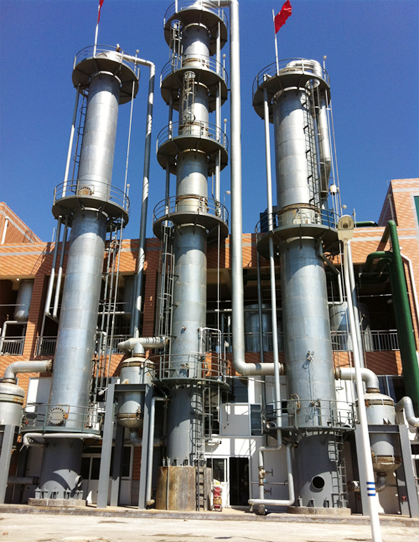As a DMC Distillation Plant, share with you.
By using the difference in the volatility of the components in the liquid
mixture, the liquid mixture is partially vaporized and the vapor is partially
condensed, so as to achieve the separation of the components it contains. It is
a unit operation that belongs to mass transfer separation. Widely used in oil
refining, chemical, light industry and other fields.

Distillation Purification Technology
The principle of Distillation Technology takes the separation of a
two-component mixture as an example. The material liquid is heated to make it
partially vaporized, and the volatile components are concentrated in the vapor,
and the non-volatile components are also concentrated in the remaining liquid,
which achieves the separation of the two components to a certain extent. The
greater the difference in volatility of the two components, the greater the
degree of enrichment described above. In industrial distillation equipment, a
partially vaporized liquid phase is brought into direct contact with a partially
condensed gas phase to perform vapor-liquid interstitial mass transfer. As a
result, the hardly volatile components in the gas phase are partially
transferred to the liquid phase. The volatile components are partially
transferred to the gas phase, that is, partial vaporization of the liquid phase
and partial condensation of the vapor phase are achieved at the same time.
Liquid molecules tend to spill from the surface due to molecular motion. This
tendency increases with increasing temperature. If the liquid is placed in a
closed vacuum system, the liquid molecules continue to overflow and form a vapor
on the upper surface of the liquid. Finally, the speed at which the molecules
escape from the liquid is equal to the speed at which the molecules return from
the vapor to the liquid, and the vapor remains constant. pressure. At this time,
the vapor on the liquid surface reaches saturation, called saturated vapor, and
the pressure it exerts on the liquid surface is called saturated vapor pressure.
Experiments have shown that the saturated vapor pressure of a liquid is only
related to temperature, that is, the liquid has a certain vapor pressure at a
certain temperature. This is the pressure at which a liquid is in equilibrium
with its vapor, and is independent of the absolute amount of liquid and vapor in
the system.
Heating a liquid to a boil, turning the liquid into a vapor, and then cooling
the vapor and condensing the liquid into a liquid, the combined operation of the
two processes is called distillation. Obviously, distillation can separate
volatile and non-volatile materials, as well as liquid mixtures with different
boiling points. However, the boiling points of the components of the liquid
mixture must be very different (at least above 30 ° C) to obtain better
separation results. When distillation under normal pressure, the atmospheric
pressure is often not exactly 0.1 MPa, so strictly speaking, the correction
value should be added to the observed boiling point, but the deviation is
generally small, even if the atmospheric pressure differs by 2.7KPa, this
correction value It is only about ± 1 ° C, so it can be ignored.
Our company also provides Distillation Purification Technology, welcome to
consult.














